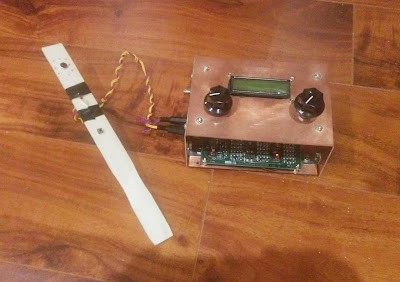This morning I was looking at Farhan's uBITX page. He got philosophical at the end of the circuit description:
As a fresh radio amateur in the 80s, one looked at the complex multiband radios of the day with awe. I remember seeing the Atlas 210x, the Icom 720 and Signal One radios in various friends’ shacks. It was entirely out of one’s realm to imagine building such a general coverage transceiver in the home lab.
Devices are now available readily across the globe through online stores, manufacturers are more forthcoming with their data. Most importantly, online communities like the EMRFD’s Yahoo group, the QRP LABS and BITX20’s groups.io community etc have placed the tribal knowledge within the grasp of far flung builders like I.
One knows that it was just a matter of breaking down everything into amplifiers, filters, mixers and oscillators, but that is just theory. The practice of bringing a radio to life is a perpetual ambition. The first signal that the sputters through ether, past your mess of wires into your ears and the first signal that leaps out into the space from your hand is stuff of subliminal beauty that is the rare preserve of the homebrewer alone.
So true! Over on the BITX.io group there is a very interesting discussion of the extent to which the uBITX is in compliance with FCC and ITU specs on harmonic and spur emission. In this discussion, I think it is important to remember the reason Farhan created the BITX rigs: The goal was to get today's radio amateurs out of their Yaesu-Kenwood-Icom appliance rut, and get them involved with the circuitry, to get them to modify and improve the rig. And that's precisely what is going on now.
It was well known that dual conversion is riskier than our old familiar single conversion architecture -- when you throw another mixer and oscillator into the rig you open the door to problematic spurious signals.. But dual conversion holds out the promise of general coverage. And the advantage of that is quite evident in the uBITX. Mine is on right now and I can switch from band-to-band with a press of the tuning control. This is nice. So a spur has been discovered -- solutions are already being offered. That's the spirit! And it looks like the low pass filters might not be as effective as hoped. This may be a simple matter of board layout and relay use. That is clearly quite fixable.
So let's remember that this is not plug-and-play ham radio. This is more of a collaborative, homebrew, open-source hardware/software project. The uBITX may be closer to true homebrew than many hams are accustomed to. That was the whole idea.
Patience is a virtue
Possess it if you can
It is never held by techies
And seldom held by hams





























